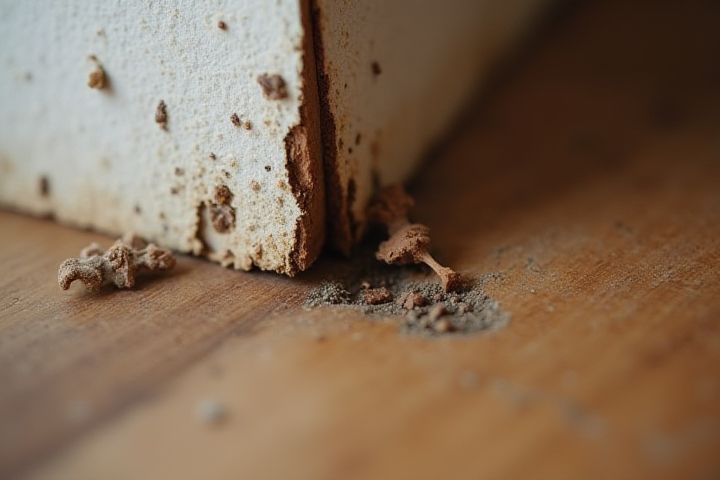
Creaking noises in your house often indicate natural settling as wood expands or contracts due to temperature changes. Older homes may exhibit these sounds due to worn-out floorboards or loose joints in the framework. Humidity can also be a factor, as moist conditions cause materials to swell, while dry air leads to contraction. Inspecting areas like the attic and basement can reveal potential sources of sound, such as shifting insulation or mechanical systems. If the noises become disruptive or alarming, consulting a structural engineer can provide peace of mind.
Why Is My House Making Creaking Noises
Temperature fluctuations
Creaking noises in your house often occur due to temperature fluctuations causing materials to expand and contract. When the temperature rises, wooden floors and beams can swell, leading to tight spots that create friction and result in creaking sounds. Conversely, during cooler temperatures, these materials contract, which can also generate noise as they settle into new positions. Understanding that your house's creaking is a natural response to daily temperature changes can ease concerns about structural integrity.
Humidity changes
Creaking noises in your house can often be attributed to humidity changes impacting the structural materials. Wood, commonly used in framing and flooring, expands and contracts in response to varying humidity levels, leading to audible creaks or pops as these materials adjust. In humid conditions, the wood absorbs moisture, swelling and causing increased friction between joints, while dry air results in contraction, creating gaps that can also lead to noise. Maintaining consistent humidity levels between 30% and 50% can help minimize these sounds and promote a quieter home environment.
Settling foundation
Creaking noises in your house may indicate that the foundation is settling, a process often caused by shifts in the soil beneath your home. Foundation settling can result from factors such as soil compaction, moisture levels, and temperature changes, leading to natural stress on structural beams and floorboards. In homes built on clay soil, for instance, the expansion and contraction of soil due to moisture fluctuations can significantly impact foundation stability. Regular inspections and maintenance can help you identify signs of settling, ensuring that any potential issues are addressed promptly.
Expanding and contracting materials
Creaking noises in your house often result from the expansion and contraction of building materials, particularly wood, due to temperature and humidity changes. For instance, changes in temperature can cause wooden beams and floorboards to swell, while cooler conditions prompt them to contract, creating those characteristic creaking sounds. This phenomenon is most pronounced in older homes that utilize timber, as the material is more susceptible to fluctuations in the environment. Regular maintenance and climate control can help minimize these sounds, ensuring a more stable indoor environment.
Wind pressure
Creaking noises in your house can often be attributed to wind pressure impacting the structural materials. When strong winds blow against your home, they create changes in air pressure that can cause wood beams and joists to expand or contract. This movement produces creaking sounds as the materials shift and settle in their frames. Regularly maintaining your home's exterior, including windows and doors, can help reduce this natural response to wind, ensuring a quieter living environment.
Plumbing issues
Creaking noises in your house can often stem from plumbing issues, particularly when water pipes expand and contract due to temperature changes. If you notice sounds occurring after using hot water or during colder nights, this may indicate that your pipes are improperly secured or made from materials that are prone to movement. In some cases, older homes with outdated plumbing systems may experience louder creaks as pipes become corroded or degraded. Inspecting your plumbing for leaks or loose fittings could help you identify and address the source of the sounds effectively.
Pest activity
Creaking noises in your house may indicate pest activity, particularly from rodents or larger insects seeking shelter. Mice, for example, can create sounds by gnawing on wood or moving through walls, especially in attics and basements. Persistent creaking might also suggest that termites are hollowing out wooden beams, with their presence leading to significant structural damage over time. Regular inspections can reveal these pest issues, helping you safeguard your home from further deterioration and unwanted guests.
HVAC system
Creaking noises in your house can often be attributed to the HVAC system, particularly when it cycles on and off. The expansion and contraction of ductwork due to temperature changes can create audible sounds, especially in older homes with metal ducts. Additionally, loose or poorly insulated ducts may vibrate, leading to pronounced creaks and groans as air moves through the system. Regular HVAC maintenance, including checking for loose fittings and ensuring proper insulation, can mitigate these noises and improve system efficiency.
Structural changes
Creaking noises in your house often indicate structural changes due to temperature fluctuations or moisture levels impacting the building materials. Wood beams, floor joists, and other components expand and contract as they absorb or release moisture, resulting in audible creaks. Older homes, particularly those built over 50 years ago, may experience these noises more frequently due to settling and shifting foundations. If creaking becomes excessive or occurs alongside visible structural damage, consulting a structural engineer is advisable to assess the integrity of your home.
Natural aging of materials
The creaking noises in your house often stem from the natural aging of materials, particularly wood, which can expand and contract with changes in temperature and humidity. Over time, floorboards, beams, and joints may start to warp or loosen, leading to a variety of sound frequencies and pitches as they shift. Houses built with traditional wooden frames are especially susceptible to these noises, especially in older constructions where wood has had many years to settle. On average, your home may experience heightened creaking during the transition months of spring and fall when moisture levels fluctuate significantly.
